Heating cable for water supply - the ice age in the pipe is
The harsh winter places increased demands on the safety of water supply systems, storage tanks, and engineering structures. Freezing and icing of elements of life support can be prevented with a special heating cable. It supports the optimal and, most importantly, constant heat of any object, ensuring its safe operation.
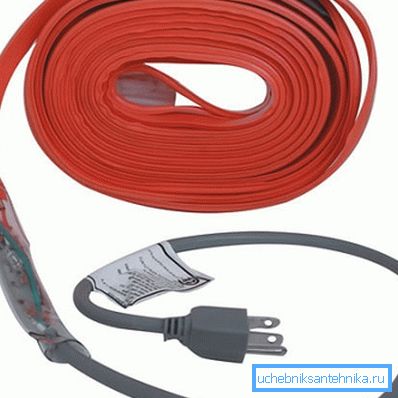
Cable to be
What could be worse than iced pipes? Non-working sewers or plumbing turn the house into a semblance of a besieged fortress. Known for the insidious properties of freezing water, which, increasing in volume, easily tears any material. Defrosting the system with hot water carries the risk of cracking.

The depth of freezing of land in different regions can reach from 0.7 to 1.9 m, which makes repairing the pipeline is extremely difficult. The most defenseless is the communications section at the entrance to the house. Strengthen the insulation of pipes will help the heating cable for water supply - engineering know-how, which eliminates the risk of freezing of liquid in the pipe, and in the reinforcement assemblies.
Habitat warm wires
It seems that the original cable can be used to warm the whole world, just the money would be enough.
Today, a warm plumbing cable is used for:
- drainpipes and roofs using running power from 30 to 50 watts / m. Operating mode is manually adjustable depending on weather conditions. A slight heating of the surface will ensure the sliding of snow and ice, not leading to the accumulation of life-threatening blocks;
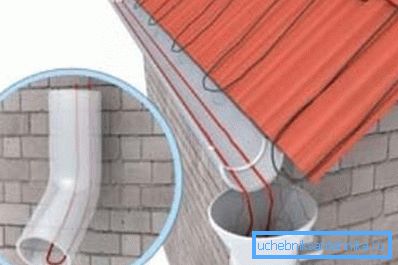
- water supply;
- sewage;
- paths in the courtyard, the approach to the garage, the steps of the porch and the territory directly near the house. The thawed snow will be cleaned easily and the ice age in your yard will remain only in terrible dreams;
- greenhouses, sports halls;
- hot water - maintaining a certain temperature;
- air conditioners drainage systems;
- fuel and product pipelines.
Note! Remember that the electrical heating is not intended for insulating the pipeline, but has safety functions. The installation manual prescribes to place the cable under the traditional thermal insulation of the pipeline. Keeping it on all the time is also not worth it - bills will rise to the skies.

General device and principle of operation
The anti-icing system consists of two insulated cables located side by side and covered with common insulation. One of the wires is used to connect the system to AC power, the other is the heating element.
An electric current, passing through a metal core - a hot wire, heats it. Spreading heat heats the entire cable and, accordingly, everything with which it comes into contact. An ordinary (cold) cable with a plug at the end, which is plugged into an ordinary household outlet, passes near the hot one.
Types of heating cable
Equipment for heating water supply varies in the type of regulation and there are two types:
- Resistive (single and double).
- Self-regulating.
Features of the heating cable
A characteristic feature of resistive cables is a constant value of resistance. When switched on, it provides heat from 5 to 13 ° C without fail, heating up along its entire length. The advantage of a single-conductor resistive cable is its price, which is much lower than a two-core cable.

A great inconvenience is caused by the connection method - the other end of the cable must return to the starting point, which extremely limits the design possibilities. The output becomes the laying of additional supply - cold wire.
The two-core warm cable for water supply is equipped with heating and power cables, and the connection is made from one end, while the other is sealed with a factory coupling. The wire is good convenience in installation, but the coupling often becomes the cause of failures in work.
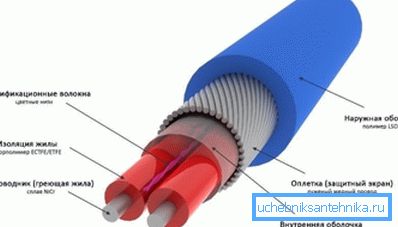
Problem thermostat
This additional device is designed to make the work of the resistive cable more efficient by automatically keeping the required temperature range. The relay must be located on the outside of the pipe. The paradox is that often by turning on / off the power, the device significantly reduces the life of the cable.
Note! Do not install the temperature sensor of the relay near the heating surface of the wire, so as not to disturb the readings.
Critical Assessment
Resistance - the water heating cable is convenient:
- clear device;
- affordable price;
- the constancy of thermal characteristics throughout the lifetime.
But there are inconveniences:
- you cannot cut the required length;
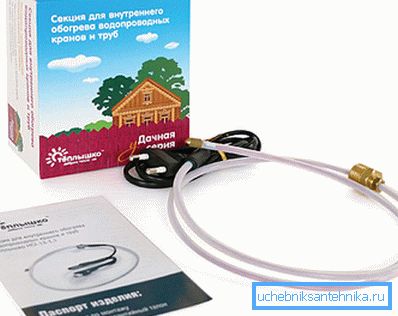
- the threat of local overheating when crossing lines and littering;
- failure of one section leads to the replacement of the whole section;
- operation in a homogeneous environment.
Self-regulation - meritorious quality
The title itself contains the essence of the work of the heating wire - it itself changes the heat generation in proportion to the fluctuation of the water temperature. Thanks to this smart cable for plumbing eliminates the possibility of its overheating / burnout.
In the heating element there are also 2 cores, which, unlike the resistive, have special insulation. They are connected by polymeric conductive filaments or are combined into a polymeric conductive matrix.

The heating self-regulating element is good:
- the widest scope of application - from heating pipelines and balconies, ending with roofs and greenhouses;
- simple installation;

- savings on fasteners;
- optional thermostat;
- the possibility of overlap;
- the ability to cut off from the bay of any length.
Installation is a delicate matter.
Anti-icing elements can be placed in two ways - inside and outside the water pipe. It is better to leave the internal installation for a specialist - he will insert a tee and insert a heating cable through a special coupling into the pipe.
External assembly work really do it yourself - fix the cable with adhesive tape / metal mesh along or twist the pipe in a spiral. Remember, it is the second method that is most effective for water heating.
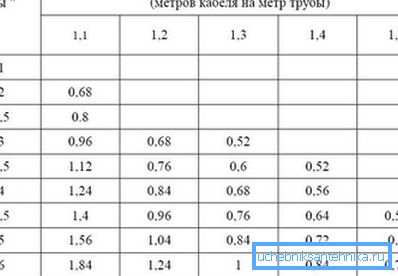
Summarizing
Providing its fortress with engineering achievements demonstrates the desire for comfort and rational thinking. The versatile use of the heating cable in addition to traditional insulation will make your home warm and invulnerable to any frost.
The video in this article will help for those who decide to lay their own cable for heating.